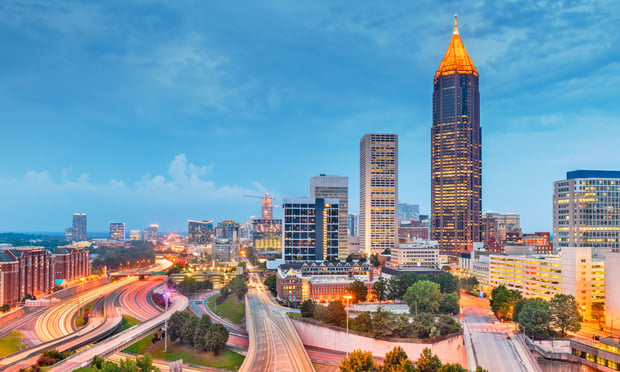The facilities cost $166 million to build--$120 million for the underground Sandy Springs station and $46 million for the North Springs station. Both tations are in areas of high-density office and residential development.
Speculation abounds that developers will build large transit-oriented mixed-use projects as well as office and residential projects around each station, though nothing is settled as yet. There has been ongoing opposition to suggested high-density development plans, given the already grim traffic in the area.
MARTA officials expect the new facilities to take some of the heavy passenger traffic from the nearby Dunwoody station. They also hope to reduce road congestion by offering convenient stations in these office/residential areas. MARTA spokesperson Dee Baker says that by 2005, the stations are projected to count 5,500 riders daily at Sandy Springs and 12,500 at North Springs.
Buses feed riders into the stations, which have individual parking decks. The Sandy Springs station has space for 1,075 cars. North Springs' deck holds 2,180 vehicles. This station has a dedicated ramp for southbound drivers on GA 400 with an electronic message board that will warn motorists if the parking lot is full. Parking is free for the first 24 hours, and $3 per day for longer stays.
Estimated travel time from the stations to Downtown is 30 minutes and to Hartsfield Atlanta International Airport about 45 minutes. These are the first stations to open since 1996, when three stations opened just prior to the start of the summer Olympic Games held in Atlanta.
MARTA's future extensions continue to be controversial. Fares are scheduled to go up 25 cents to $1.75 beginning in January, in part to cover the cost of the North Line extension. Two counties, Fulton and DeKalb, support MARTA with a one cent sales tax while other counties have refused to participate. DeKalb is currently balking at continuing the sales tax for MARTA.
Additionally, there are some groups who contend that MARTA's extension should be west and southwest into areas where more transit-dependent people live, rather than north into suburban affluent and primarily white areas.
© 2025 ALM Global, LLC, All Rights Reserved. Request academic re-use from www.copyright.com. All other uses, submit a request to [email protected]. For more information visit Asset & Logo Licensing.







